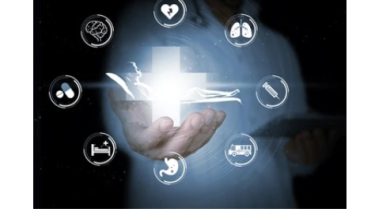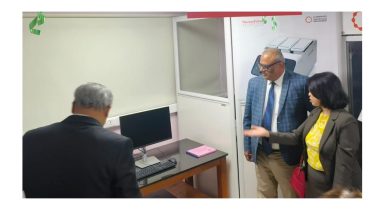The Lancet Oncology Commission on Medical Imaging and Nuclear Medicine launched

The commission aims to provide data and guidance to catalyse sustainable improvement of medical imaging and nuclear medicine services for cancer management
The Lancet Oncology Commission on Medical Imaging and Nuclear Medicine was recently launched at the European Congress of Radiology 2021. The results from the first-ever comprehensive effort to quantify imaging and nuclear medicine resources worldwide, highlights dramatic inequalities in access to these resources. It also shows for the first time that scaling up access to imaging and nuclear medicine for cancer patients in low-income and middle-income countries (LMICs) would yield substantial health and economic benefits, and it calls for an overarching global strategy to address this need.
By 2030, worldwide, annual numbers of new cancer cases and cancer deaths are expected to reach roughly 22 million and 13 million, respectively. Even more concerning, approximately 80 per cent of the disability-adjusted life years lost to cancer are in LMICs, where only about 5 per cent of the global funding for cancer control and care is applied. Imaging is essential to provide timely diagnosis, appropriate treatment selection and planning, and optimal outcomes for patients with cancer.
“The commission aims to provide data and guidance to catalyse sustainable improvement of medical imaging and nuclear medicine services for cancer management, particularly in LMICs,” explains lead Commissioner Dr Hedvig Hricak from Memorial Sloan Kettering Cancer Center, New York/US.
Under the Commission, the International Atomic Energy Agency (IAEA) led a global effort to collect and collate data on equipment and workforce, with a focus on LMICs through the IAEA Medical Imaging and Nuclear Medicine Global Resources Database (IMAGINE). The effort revealed substantial differences in the numbers of imaging units per million population between high-income and low- and middle-income countries, as well as variations within income groups. It also revealed that availability of a well-trained workforce for imaging and nuclear medicine is a major issue affecting access to and quality of these services.
“To date, comprehensive information on appropriate levels of imaging and nuclear medicine facilities and workforce required for cancer care have been limited. The data obtained allows estimates of projected equipment and workforce scale-up requirements for diagnostic imaging in cancer care,” says Dr May Abdel-Wahab, co-first author of the Commission and Director of the IAEA Division of Human Health.
A microsimulation model developed by researchers at Harvard University estimated that the scale-up of imaging would avert 3.2 per cent (2.47 million) of all 76 million deaths caused by cancer worldwide between 2020 and 2030, saving 54.92 million life-years. Model estimates indicate that a comprehensive scale-up of imaging, treatment, and care quality would avert 9.55 million (12.5 per cent) of all cancer deaths worldwide, saving 232.30 million life-years. Combining the scale-up of imaging, treatment, and quality of care would provide a net benefit of $2.66 trillion and a net return of $12.43 per $1 invested.
“For the first time, we have evidence demonstrating the substantial health and economic benefits of scaling up imaging and nuclear medicine access for health outcomes of cancer patients globally and we have a compelling economic case for further investment in global scale-up of imaging and nuclear medicine,” says Dr Rifat Atun, co-first author of the Commission and Professor of Global Health Systems at Harvard University.
“Now we need to get governments and funding bodies on board to work together on scaling up imaging infrastructure in LMICs,” adds Dr Hricak.
The Commission proposes an ambitious call to action to realize the health and economic benefits of scaling up imaging to reduce cancer burden globally. This goal is aligned with the aims of the 2017 WHO Cancer Resolution and with UN health targets in the 2030 agenda for sustainable development, particularly for reducing the burden of non-communicable diseases and implementing universal health coverage.
“The IAEA can support countries in upscaling their diagnostic imaging capabilities through fact-finding missions, technology transfer, capacity building, clinical research, education and training initiatives, quality management programs, and guidelines,” says Dr May Abdel-Wahab.
“The Commission provides a clear path forward, and we look forward to collaborating with all stakeholders on implementing the call to action to improve cancer care for patients globally,” says senior author of the Commission Dr Andrew Scott from Austin Health and the Olivia Newton-John Cancer Research Institute, Melbourne, Australia.
The commission concludes that science and technology are not the barriers to a worldwide equitable scale-up of effective cancer imaging diagnostics; rather, achieving equitable scale-up is a matter of vision and political will. Successful scale-up will result from effective political leadership, active participation from all major stakeholders, and the alignment of country-level and global efforts to expand access to medical imaging and nuclear medicine for cancer care. Efforts must take into account local and regional conditions (e.g., the prevalence of particular cancers and the availability of specific kinds of treatments, among other factors), and must be coordinated with the scale-up of other cancer care resources and universal health coverage.
Prof David Collingridge, Editor-in-Chief, The Lancet Oncology said, “Cancer imaging is vital for accurate diagnosis and treatment, but huge global inequities exist and many of the world’s poorest countries suffer from a shortage or complete lack of the necessary technology and resources. We need to move the debate so that cancer imaging is placed alongside curative interventions as an essential component of comprehensive cancer care, and in turn, universal health coverage.”




